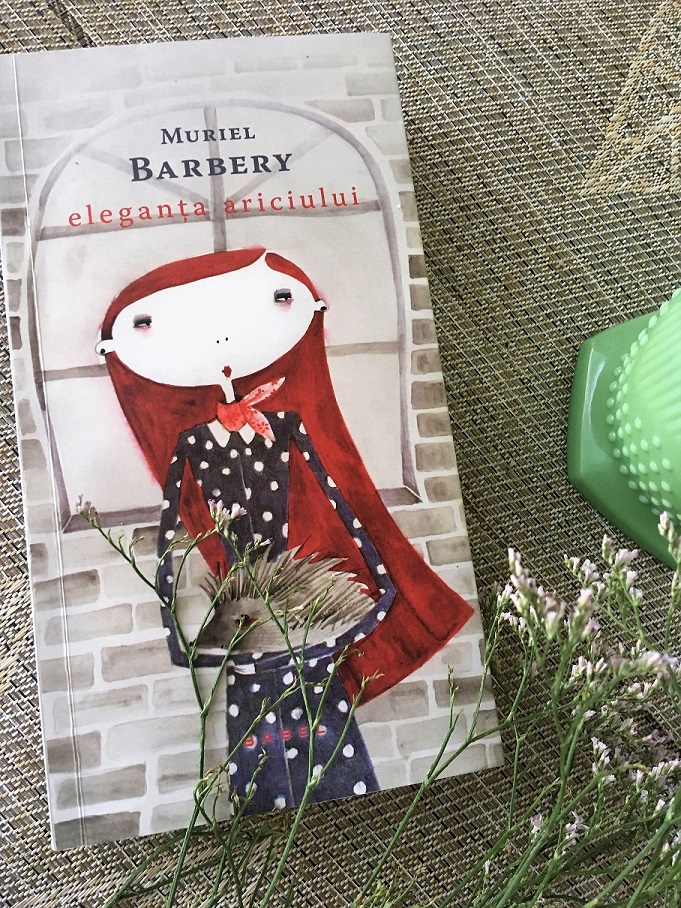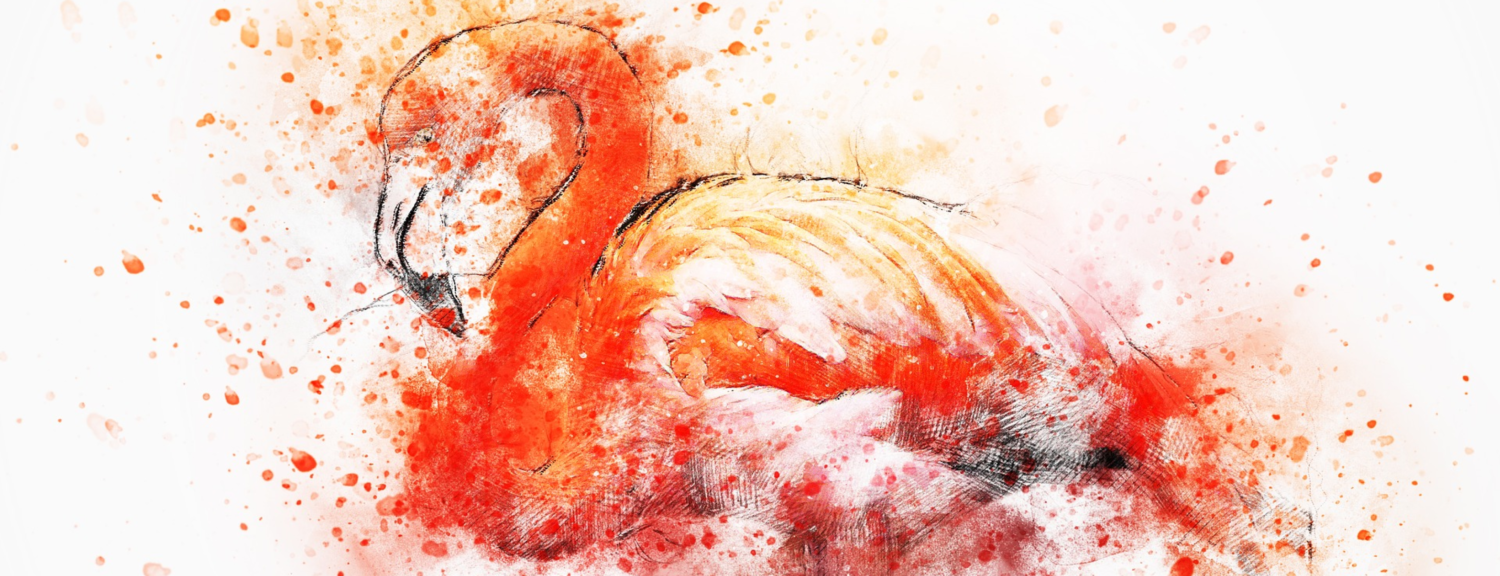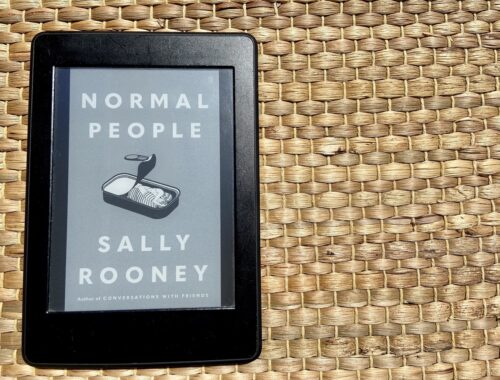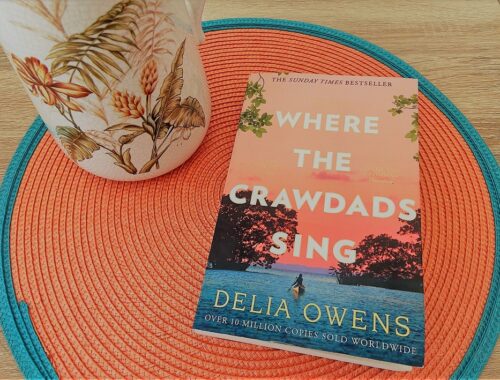
The elegance of the Hedgehog – a book review

by The Flamingo
The French author Muriel Barbery is my new discovery this past year and her book “The elegance of the hedgehog” has opened my mind to another writing style, one I would never have thought, I would savor. Alas, life is all about learning new things and thus this book ended on my preference list.
“The elegance of the hedgehog” is a satire on human condition, on intellectuality and the bourgeois elite, as well as a contemplation on the fragility and impermanence of life.
The two main characters are as unexpected as they are rich and complex: a self taught doorkeeper, in her 50s, and an extremely brilliant 12 year old girl with suicidal and pyromaniac inclination.
Renée and Paloma have very different origins from one another, one being the daughter of a peasant family, with no studies and with an apparently mediocre life, while the other is the youngest in a intellectual and wealthy bourgeois family.
Despite this huge difference between their social standing, Renée and Paloma discover that they are each other’s reflection and their solitude is attenuated the moment they become friends.
Renée is a widowed doorkeeper of the luxury building apartments on Nr 7, Rue de Grenelle, Paris. She spent her life educating herself on different subjects such as philosophy, literature, art, music, cinema and fine taste in gastronomy. She doesn’t mix with other social classes, being very certain that everyone has their place in this world and such a mixture can bring only misfortune. Comedy plays a big role in this novel. Our Doorkeeper fakes her illiteracy and ignorance so that she doesn’t cause discomfort and bewilderment to the true intellectual bourgeois society.
Paloma, the exceptionally gifted and very unhappy child, lives with her republican family in the luxury building of apartments on Nr. 7, Rue de Grenelle. (Attention, dear Americans, French republican is at the opposite pole from the American republican). The same as the Doorkeeper, she fakes her stupidity, in order to appear that she belongs, not drawing any attention to herself. She doesn’t understand her family, she considers it selfish and hypocritical and she mocks them in her thoughts with every opportunity she gets: the father, a socialist member of parliament, always wracked by guilt; the mother, a progressive bourgeois, with a passion for psychoanalysis and plants, addicted to antidepressants; her detested elder sister, Colombe, who studies philosophy, with an obsession for cleaning and proving her superior intelligence over others.
The third character would be the building Nr. 7, Rue de Grenelle with all its residents, one “more intellectual” than the other, all of them rich bourgeois, some progressive, some conservatives, who don’t give their pets ordinary names like Rex, Kiki or Fluffy, but name them after Greek gods like Neptune or Atena. The cats are named after philosophers like Husserl, or after Tolstoyan characters like Kitty and Levin. The most imposing cat names were given by Paloma’s family, Constitution and Parliament. The Doorkeeper also names her tomcat Leon, Leo, after Tolstoy of course.
The book is a constant antithesis between the “true intellectuals”, that are more modest and try looking uninteresting and ignorant, and those who consider themselves “the elite”. The latter want to appear smarter and finer than they really are, but are betrayed by occasional grammatical or punctuation errors, or by their accent.
Besides this hilarious antithesis, which made me constantly laugh, this book is full of parables, musings and subtle or obvious metaphors related to the beauty and the sense of life. Here are some examples of Renée and Paloma’s musings, that piqued my curiosity:
- About cynicism: there is no one more gullible than the cynic, because he still believes with all his might that the world has a meaning. Influenced by the stupid experiences in his childhood, that he doesn’t let go off, he adopts the opposite attitude: “Life is a bitch, I don’t believe in anything and and I will take advantage of that until I’m sick of it”.
- About the genuine aristocratic heart: what is an aristocratic woman? It’s a woman who isn’t touched by vulgarity, even if she is always surrounded by it.
- About death: the rich claim that the poor are differently affected by death, because they are uneducated and thus they don’t perceive human emotions as intense, so their drama isn’t severe.
- About the obsessive cleaners: they are chaotic on the inside, empty as well as crowded, they try sorting themselves out by organizing and cleaning the room.
- About beauty and the Japanese concept of “wabi”: the first means “proper”, while the latter symbolizes a vague form of beauty, a refinement masked by the rustic.
- About intelligence: is falsely considered a purpose and is defined as the only weapon that the primates have.
- About art: puts a form and makes our emotions visible, thus giving them the seal of eternity.
- About toilet paper: the most convincing sign of wealth.
- About the role of grammar: which gives access to the structure and the beauty of the language.
- About interior design: the bizarre need to decorate with redundancies, when in fact a single item would make us much happier.
- About the unhappiness of the expat: he doesn’t have a culture and he is torn between two worlds and their incompatible symbols.
- About the word “never”: which is frightening, permanent and uncontrollable, but in which there is also an “always”, “the beauty in this world”.
“The elegance of the hedgehog” combines beautifully the two cultures close to my heart, the Japanese culture with the French one. It left me with the desire to discover and learn more. I think this book is for “snobbish readers”, with a developed sense of humor and self irony. For this novel to be understood and appreciated at its true value, the reader must have first some knowledge in the few domains that appear and are debated throughout the story: Russian literature, phenomenology and medieval philosophy, Dutch art, French politics, classical music, Japanese cinema, grammar and punctuation and foremost to have appreciation for the Japanese and French cuisine.
All the readers can identify themselves in the pages of this book, all can find their problems and their worries expressed in a natural and not very pretentious way. You can dissect and linger upon them as needed. But the most important aspect of the novel is that the readers can find also the solution to their problems, and the reading of this book is like lifting a heavy weight from heart and mind, changing the perspective on life.
“The Elegance of the hedgehog” should be read and reread over the years, just to remind us to look for the beauty in the small things around us.
I leave you now, dear readers, with my own musing, which i came up with while reading this wonderful work of art:
- For the Europeans, the Japanese metaphors have a more subtle and profound meaning, they sound a lot better, smoother, more mysterious than the ones used in our own culture. For example, “the mountains have the color of the azuki cake” excites the ears of every “intellectual snob”. The European version would sound something like this: “the sun has the color of a warm polenta”.
Eleganța ariciului – o recenzie
Autoarea franceză Muriel Barbery este noua mea descoperire din ultima perioadă, iar cartea ei, “Eleganța ariciului”, mi-a deschis mintea către un stil pe care nu am crezut că l-aș putea savura vreodată. Dar iată, omul cât trăiește învață și astfel acest roman a ajuns pe lista preferatelor mele.
“Eleganța ariciului” este o satiră la adresa condiției umane, a intelectualității și elitei burgheze, precum și o contemplație asupra efemerității și fragilității vieții.
Cele doua personaje centrale sunt pe atât de neașteptate pe cât sunt de ofertante: o portăreasă autodidacta trecută de mult de prima tinerețe și o fetiță supradotată cu intenții suicidare și piromane.
Renée și Paloma provin din medii de viață foarte diferite, prima fiind fiică de țărani, fără studii și cu o viata aparent mediocră, iar cealaltă mezină a unei familii intelectuale burgheze înstărite. În ciuda acestei mari diferențe pe scara ierarhiei sociale dintre Renée și Paloma, ele descoperă că sunt oglinda una a celeilalte, iar singurătatea fiecăreia este alinată în momentul în care se împrietenesc.
Renée este portăreasa văduvă a imobilului de lux de pe Rue de Grenelle, numărul 7, din Paris. Toată viața s-a instruit singură în tot ceea ce înseamnă filosofie, literatură, artă, muzică, cinema și gusturi fine în gastronomie. Nu se amestecă cu alte clase sociale, fiind ferm convinsă ca fiecare își are locul propriu, iar un astfel de amestec s-ar finaliza doar în nenorocire. O parte bună din hilaritatea romanului provine din faptul că Portăreasa noastră își mimează gradul de incultură pentru a nu provoca disconfort și descumpănire intelectualilor burghezi adevărați.
Paloma, copilul supradotat și nefericit, locuiește împreună cu familia republicană într-unul din apartamentele luxoase ale clădirii Nr. 7. La fel ca și Portăreasa, își mimează inepția ca să pară oarecum integrată și să nu atragă atenție asupra ei. Nu își înțelege familia, îi consideră egoiști și fățarnici și îi satirizează în mintea ei cu orice ocazie: pe tatăl, parlamentar socialist ros permanent de vina; pe mama, o burgheză progresista pasionată de psihanaliza și plante, dependentă de antidepresive; pe detestata ei soră mai mare, Colombe, studentă la masterat în filosofie, obsedată de curățenie și de a-și demonstra superioritatea intelectuală asupra oricui.
Al treilea personaj ar fi clădirea de apartamente din Rue de Grenelle cu toți locatarii ei, unul mai intelectual ca celălalt, toți burghezi bogați, unii progresiști alții conservatori care își denumesc animalele de companie nu cu nume ordinare gen Rex, Kiki sau Fluffy. Câinii lor sunt botezați după zei greci, gen Atena și Neptun, iar neamul pisicesc după filosofi ca Husserl, sau personaje din Tolstoi precum Kitty și Levin. Cele mai impunătoare nume felinești, după părerea mea, sunt cele ale familiei Palomei, Constituția și Parlamentul. Până și doamna Portăreasă își numește motanul Leon, adică Leo (Lev Tolstoi).
Cartea este o antiteză constantă între “adevărații” intelectuali, care sunt mai modești și vor să pară mai banali și mai înapoiați decât sunt și cei care se consideră elite intelectuale, ce vor sa pară mai deștepți decât sunt, dar care sunt trădați de ocazionale greșeli gramaticale, de punctuație sau accent.
Pe lângă această antiteză amuzantă, care m-a amuzat constant, cartea este plină de parabole, cugetări și metafore subtile sau evidente la adresa frumuseții vieții și a sensului ei. Iată câteva exemple de cugetări ale lui Renée și ale Palomei care mi-au atras atenția:
- Despre cinism: “nu există nimic mai credul decât cinicul. Din cauză că încă mai crede cu toată tăria că lumea are un sens și fiindcă nu reușește să renunțe la neroziile copilăriei adoptă el atitudinea inversa: “Viața e o târfă, nu mai cred în nimic și-o să profit de asta până mi s-o face greață”.
- Despre inima nativ aristocrată: “Ce este o aristocrată? Este o femeie pe care vulgaritatea nu o atinge, deși e înconjurată de ea”.
- Despre moartea care, conform celor bogați, îi afectează diferit pe săraci, ei fiind needucați, ar resimți emoțiile umane mai puțin intens și astfel drama morții ar fi mai mică.
- Despre obsedați de curățenie: persoană “haotică pe dinăuntru, deopotrivă goală și aglomerată, încât încearcă să-și facă ordine în ea însăși rânduindu-și și curățindu-și camera”.
- Despre frumusețe și conceptul japonez “wabi”, prima fiind sinonim cu “adecvat”, iar celălalt simbolizând “o forma ștearsă a frumosului, un gen de rafinament mascat de rusticitate”.
- Despre inteligență: este în mod greșit considerată un scop și este definită ca “singura armă a primatelor”.
- Despre artă: “pune forma și face vizibile emoțiile noastre” punând pe ele pecetea eternității.
- Despre hârtia igienică: cel mai convingător semn al bogăției.
- Despre rolul gramaticii: un acces la structura și frumusețe a limbii.
- Despre design interior și nevoia bizară de a decora cu redundanțe, când de fapt un singur exemplar ne-ar bucura mai mult.
- Despre drama expatului, care nu are o cultură și este sfâșiat de culturi și simboluri incompatibile.
- Despre cuvântul “niciodată”: este înfiorător, definitiv și de necontrolat, în care există “un întotdeauna”, “frumusețea din această lume”.
“Eleganța ariciului” îmbină cu măiestrie culturile mele de suflet, cea franceză cu cea japoneză și m-a lăsat cu dorința să descopăr, să învăț mai multe. Consider că este o carte pentru “cititori snobi”, cu un simț bine dezvoltat al umorului și al autoironiei. Ca totuși aceasta operă să fie apreciată la adevărata ei valoare, cititorul ar trebui sa fie în prealabil informat în câteva domenii care apar și sunt dezbătute constant pe parcursul ei ca: literatura rusă, fenomenologia și filosofia medievală, arta olandeză, politica franceză, muzica clasică, cinematografia japoneză, gramatică și punctuație, și nu în ultimul rând să aibă apreciere pentru arta culinară japoneză și franceză.
Toți cititorii se pot identifica în paginile acestui roman, toți își pot găsi problemele și frământările formulate într-un fel natural și nu foarte pretențios. Acestea se pot diseca și rumega după voia inimii. Dar cel mai important aspect este, că își găsesc și soluțiile la aceste probleme. Cititul acestei cărți este ca o piatră grea care se ridică de pe inimă și schimbă perspectiva asupra vieții.
“Eleganța ariciului” ar trebui citită și recitită de-a lungul anilor doar pentru a ne reaminti să căutăm frumusețea în lucrurile mici din jurul nostru.
Vă las acum, dragi cititori, cu o cugetare a mea, pe care am scornit-o în timpul acestei lecturi minunate.
- Pentru europeni, metaforele japoneze au o semnificație mult mai profundă și subtilă, care sună mult mai bine, mai armonios și mai misterios decât cele din propria cultură. Spre exemplu, “munții au culoarea turtei de azuki” extaziază auzul oricărui “snob intelectual”. În varianta europeană, o metaforă asemănătoare ar suna în felul următor: “pajiștile au culoarea piureului de mazăre Bonduelle”.






One Comment
The Flamingo
Thank you!